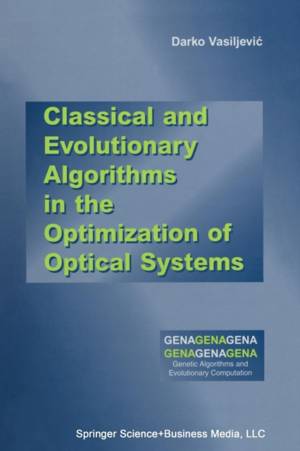
- Afhalen na 1 uur in een winkel met voorraad
- Gratis thuislevering in België vanaf € 30
- Ruim aanbod met 7 miljoen producten
- Afhalen na 1 uur in een winkel met voorraad
- Gratis thuislevering in België vanaf € 30
- Ruim aanbod met 7 miljoen producten
Zoeken
Classical and Evolutionary Algorithms in the Optimization of Optical Systems
Darko Vasiljevic
Paperback | Engels
€ 111,95
+ 223 punten
Uitvoering
Omschrijving
The optimization of optical systems is a very old problem. As soon as lens designers discovered the possibility of designing optical systems, the desire to improve those systems by the means of optimization began. For a long time the optimization of optical systems was connected with well-known mathematical theories of optimization which gave good results, but required lens designers to have a strong knowledge about optimized optical systems. In recent years modern optimization methods have been developed that are not primarily based on the known mathematical theories of optimization, but rather on analogies with nature. While searching for successful optimization methods, scientists noticed that the method of organic evolution (well-known Darwinian theory of evolution) represented an optimal strategy of adaptation of living organisms to their changing environment. If the method of organic evolution was very successful in nature, the principles of the biological evolution could be applied to the problem of optimization of complex technical systems.
Specificaties
Betrokkenen
- Auteur(s):
- Uitgeverij:
Inhoud
- Aantal bladzijden:
- 279
- Taal:
- Engels
Eigenschappen
- Productcode (EAN):
- 9781461353706
- Verschijningsdatum:
- 23/10/2012
- Uitvoering:
- Paperback
- Formaat:
- Trade paperback (VS)
- Afmetingen:
- 156 mm x 234 mm
- Gewicht:
- 417 g

Alleen bij Standaard Boekhandel
+ 223 punten op je klantenkaart van Standaard Boekhandel
Beoordelingen
We publiceren alleen reviews die voldoen aan de voorwaarden voor reviews. Bekijk onze voorwaarden voor reviews.








